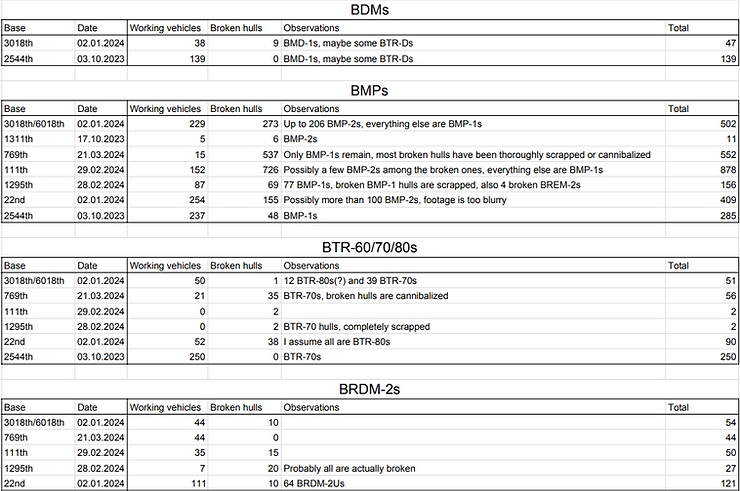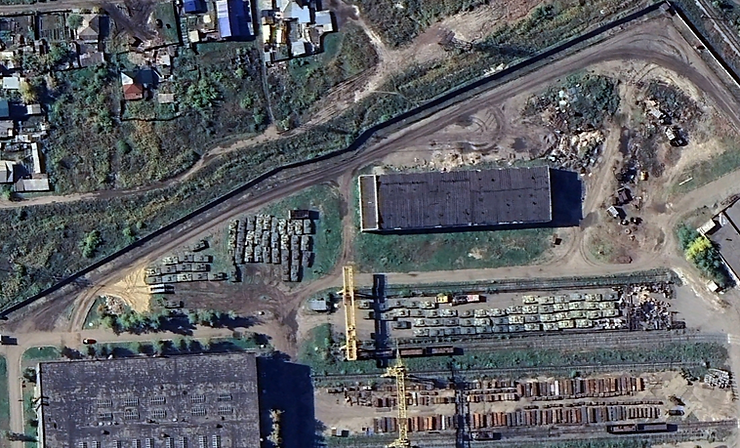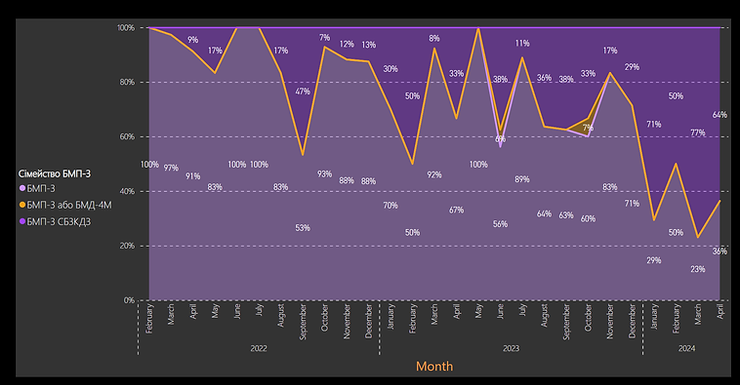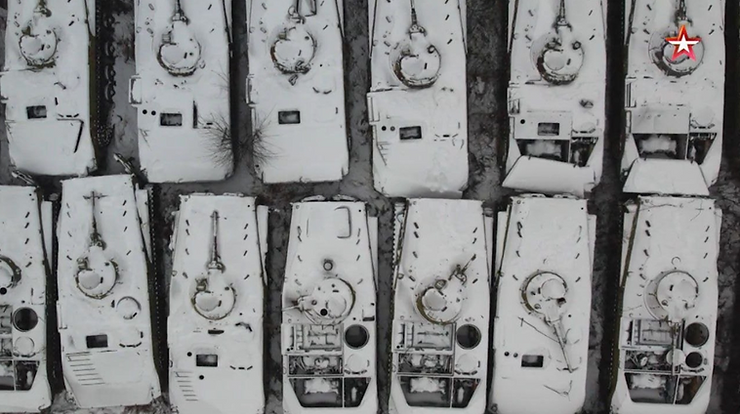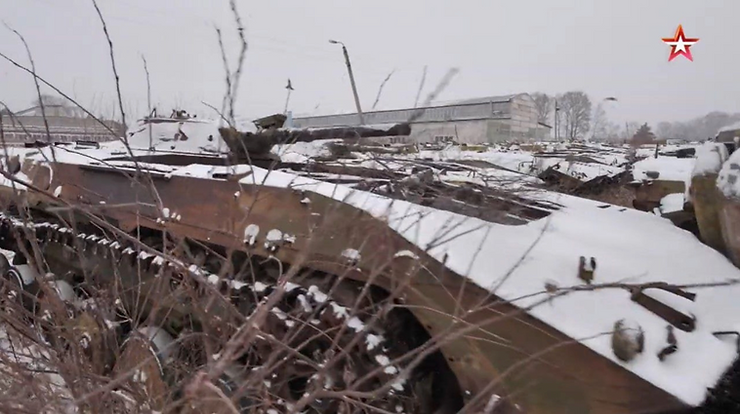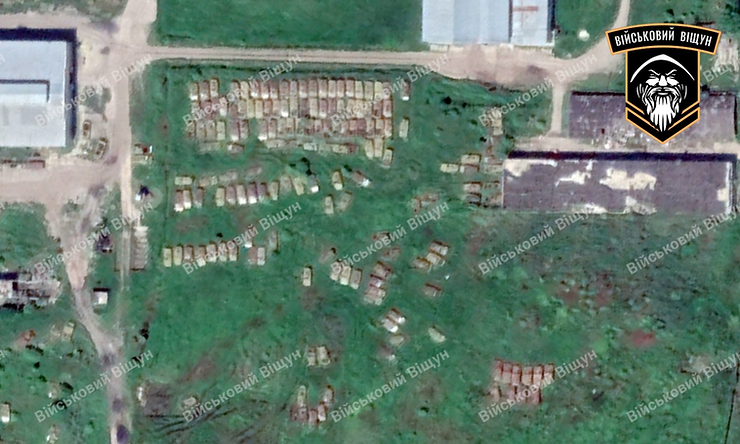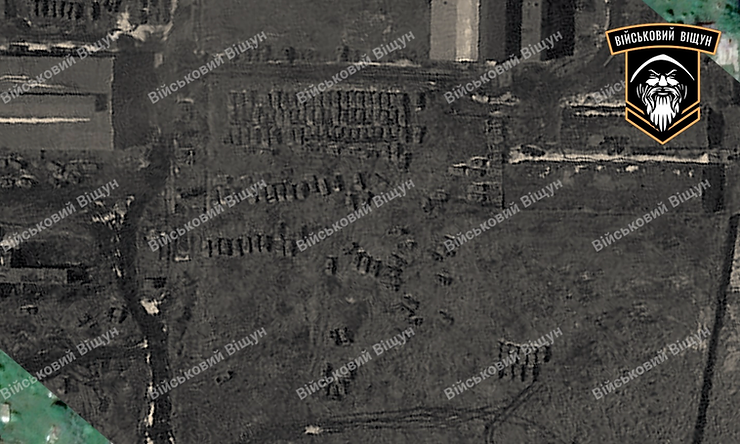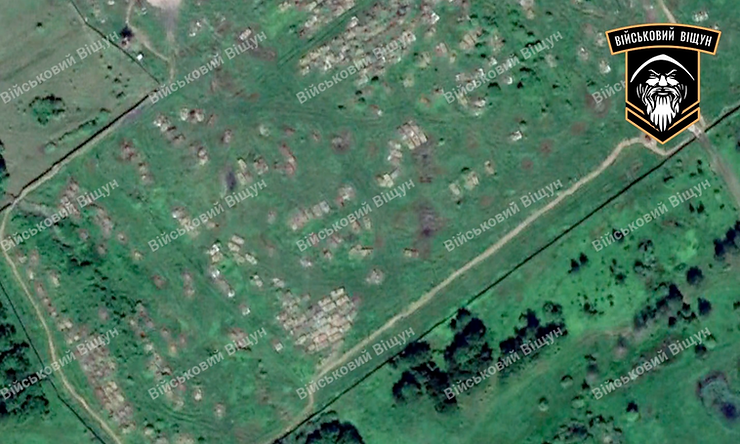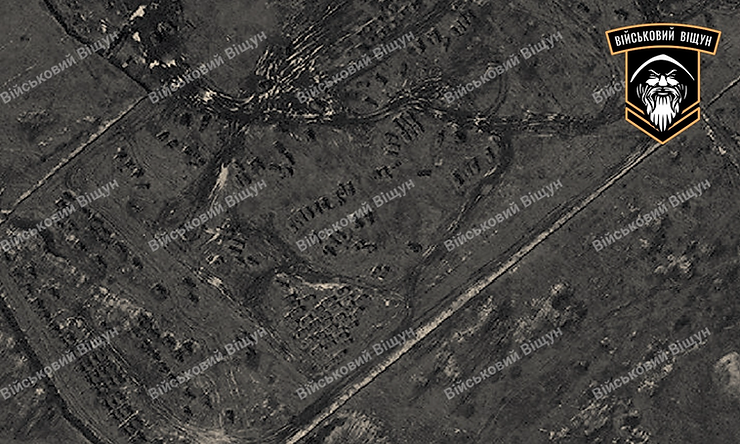The rate of deconservation of BBM is falling: what is happening at Russian storage bases
After a large study of the tank potential of the Russian Federation, it is also worth looking at armored combat vehicles , the role of which has significantly increased in the tactics of the Russian offensive.
In this study, we will focus more on the processes that take place at the largest storage bases, because we do not have fresh satellite images of all the bases, where before the war there were as many as 14,000 units of BBM and special equipment based on BBM.
We analyzed the 2024 winter images and compared the number of cars with the 2021 count. This time we paid attention to the condition of the machines and divided them into two categories, because very interesting things are happening there.
The calculation of equipment was carried out by the analysts of " Military Fortune Teller " and Osinter
Jompy , so we got two sources of information, which has the most positive impact on research.
The Fortune Teller's Count
We approached the calculation very conservatively. Machines with a whole body without visual signs of cannibalization were classified as " relatively good" , machines that have visually undergone or are undergoing the process of cannibalization (machines without turrets, with partially or completely disassembled mechanics) were classified as "disassembled into parts" . Empty bodies without tracks in disposal areas were not counted.
The calculation error is 5-7% plus or minus due to weather conditions, image quality and human factor.
| Base | 2021 (High Marsed) | 01-02.2024 (relatively good) | 01-02.2024 (disassembled into spare parts) | Total 2024 | The percentage of cannibalized BBM |
| 22 (Buy) | 1220 | 700 | 30 | 730 | 4,11% |
| 1295 (Arsenyev) | 275 | 103 | 23 | 126 | 18,25% |
| 111 (Halgaso) | 1032 | 694 | 212 | 906 | 23,40% |
| 769 (Vagzhanova) | 989 | 137 | 464 | 601 | 77,20% |
| 6018 (Kamishlov) | 1194 | 545 | 60 | 605 | 9,92% |
| 2455 (Kozulka) | 1118 | 596 | 53 | 649 | 8,17% |
| Together | 5828 | 2775 | 842 | 3617 | 23,28% |
Jompy count
Jompy did a much more extensive calculation and analyzed the equipment not only by suitability (bad/good), but also identified the types of machines. To begin with, a summary table with the number of bad/good cars.
| Base | Working vehicles | Broken hulls | Total | cannibalized % |
| 3018th/6018th | 379 | 317 | 696 | 45.55% |
| 769th | 80 | 572 | 652 | 87.73% |
| 111th | 196 | 756 | 952 | 79.41% |
| 1295th | 103 | 101 | 204 | 49.51% |
| 2544th | 633 | 48 | 681 | 7.05% |
| 22nd | 417 | 219 | 636 | 34.43% |
| Total | 1808 | 2013 | 3821 | 52.68% |
And counting by types:
Jompy's count is more liberal with regard to unusable machinery. These are visually intact (not disassembled for parts) machines that are in terrible condition: they are located in remote areas of bases where there is no trace of activity, they are rusted, they have not moved for a decade, some have bushes and trees growing on them.
What the analysis showed
Despite small discrepancies in the numbers, the overall result of the count (the number of all machines at the bases) at the strategic level coincided with a small error.
As a result of the analysis, we saw two main events:
- The pace of equipment deconservation over the past 6 months has dropped significantly;
- 25-50% of the remains of the technique are unsuitable for restoration (depending on how conservatively you perceive the analysis).
In total, at these 6 bases, the number of de-conserved BBMs during the two years of the war amounted to almost 40%. And now in detail.
(jätän lainaamatta artikkelin osan jossa käsitellään yksityiskohtaisesti varastotukikohtia yksi toisensa jälkeen - sen voi käydä lukemassa artikkelista linkin takaa - lainaan sitä seuraavat osuudet kokonaisuudessaan tähän jatkoksi)
What's next?
Although the Russians have a large number of BMP-1 and BTR-70/60 in stock, the capacity of repair plants is limited, which is why they are trying to restore the equipment directly at the storage bases by cannibalization.
The Russians are in a hurry and trying to squeeze the most out of their offensive, so in 2023 they used quick decisions to supply equipment to the army "here and now", exchanging quality for speed and quantity. That is why now, every day in the east, the positions are being stormed by endless columns of lured Päpelatians, who, after such losses, will sooner or later have to take a long operational break.
If you look at the calculation not so conservatively, then the vast majority of the equipment at these bases is not "liftable" and must be overhauled at the armored repair plant. Theoretically, everything can be restored, practically it will stretch for a long period of time.
Assessment of the pace of repair and production of BBM
This topic has always been difficult, and the exact numbers can be named for sure only by intelligence. We only have pre-war production figures, information from open sources about the processes at enterprises, the increase in staff and the figures of the increase in production declared by the Russians: "2 times more than last year", "we produced the same amount in one month as in the previous year" quarter" etc.
We can extract some figures from open sources, understand how the number of employees has increased and how production can increase at the same time, comparing with pre-war production. The figures are indicative and cannot reflect a complete and accurate picture.
| Institution | Model | Estimated annual amount |
| Arzamas Machine-Building Plant | BTR-82A/BTR-82AM (production) | 480 |
| Shcheglovsky Val | BMP-2/BMD-2 (repair/modernization) | 120 |
| Kurganmashzavod | BMP-3/BMP-2M (production and repair/modernization) | 360 |
| Rubtsovsky Machine-Building Plant | BMP-1AM (modernization) | 120 |
| 103 BTRZ | BMP-2/BRDM-2M (repair/modernization) | 70 |
| 163 BTRZ | BMP-1/BMP-2 (repair) | 200 |
| 560 BTRZ | BMP-2/BMD-2 (repair) | 160 |
| 81 BTRZ | BTR-82AM (modernization of BTR-80) | 160 (?) |
| 103 arsenal | BMP-1/2 | ? |
| 71-72 BTRZ | ? | ? |
| Together | - | from 1670 units |
Some samples of equipment are not included, as the exact numbers are not known. We are talking about armored cars, MRAPs, BMD-4, BTR-D, etc. They are not so numerous, but they must be taken into account.
Repair is not manufacturing
And let's decipher a little some numbers that may seem overestimated to someone. Let's take BMP-3 and Kurganmashzavod as an example. Someone will say that the plant cannot ship as many as 360 cars a year, but they do not take into account that they include repaired units of equipment.
In September 2023, there were a hundred units of BMP-3 with different camouflage on the Kurganmashzavod site. That is, these are previously produced BMP-3 at different times for different military units. It is likely that these vehicles undergo repairs and receive an additional set of 688M-SB3KDZ armor, after which
“Kurganmashzavod has already shipped the second batch of BMP-3 infantry fighting vehicles to the Russian Ministry of Defense this year.”
This is also explained by the graph , on which you can see a significant increase in the losses of BMP-3 688M-SB3KDZ. The root of this growth is pictured above. To take a car from the army and add armor to it is not to be made from scratch.
I would also like to draw attention to the fact that the figures of the increase in production announced by the Russians should be treated with extreme skepticism, since these figures are primarily based on propaganda.
BMP-1 at site 560 BTRZ
The propagandist of the "Military Acceptance" program pokes his finger at one of the BMPs and wonders how much time should be spent on restoring such a vehicle?
Further, the propagandist's off-screen voice explains that if it used to take months to restore such a car, now cars in this condition are restored in a matter of days. Shall we do a little fact check?
Here is this very site in June 2022:
June 2022
And here is the same site on March 29, 2024:
March 29, 2024
Were all cars repaired in "a matter of days"? Is it a piece of junk that hasn't even been touched? The situation is the same at another site. Only a small number of tanks were repaired.
In general, work is carried out primarily on cars in better condition from storage bases. Also, the factories are charged with equipment that was damaged at the front, which then goes to the general column of "manufactured machines".
Result
As with tanks, the Russians still have enough material to restore BBM.
Depletion of "lifting" reserves is expected closer to 2026 if current average annual loss rates are maintained.
 Sotataloudessahan maan pitäisi tuossa tilanteessa pyöriä ja lailla määrätä riviin juuri sen verran kuin katsotaan tarpeelliseksi.
Sotataloudessahan maan pitäisi tuossa tilanteessa pyöriä ja lailla määrätä riviin juuri sen verran kuin katsotaan tarpeelliseksi.
 Ammunition for HIMARS
Ammunition for HIMARS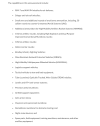
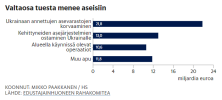


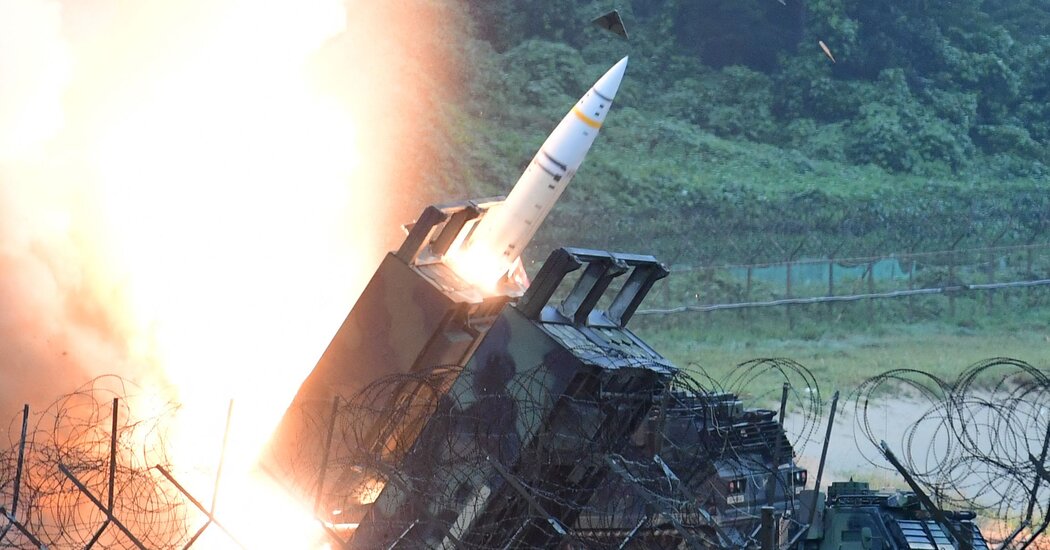
 ️Military Fortune Teller
️Military Fortune Teller
 what happened As of 2021, the Russian Federation had 14,000 units of BBM in storage .
what happened As of 2021, the Russian Federation had 14,000 units of BBM in storage . Military Vishun is an intelligence and analytical platform that collects and analyzes data about the armies of the world and Ukraine, including their military potential
Military Vishun is an intelligence and analytical platform that collects and analyzes data about the armies of the world and Ukraine, including their military potential